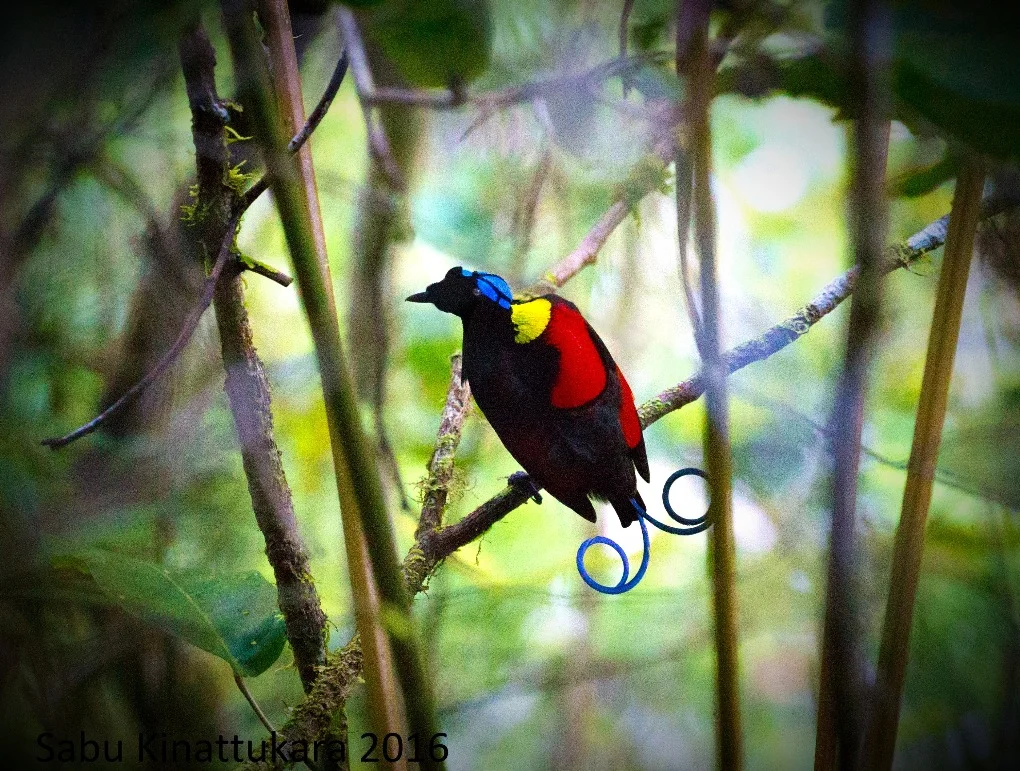
Where To Go To See Wilson’s Bird of Paradise?
When a group of bird photographers met for the first time at Sorong airport a few days before arriving on Indonesia’s remote Waggieo Island, none of us knew what to expect from the expedition to the remote Raja Ampat Islands. Despite the fact that I had previously worked with Tony Palliser, the legendary Australian birder, in Papua New Guinea the previous year, the new team included participants from Germany and Korea, and I was meeting them for the first time. We had to take a 4-hour speed boat ride through a rough sea to get to our destination, which was in an uninhibited part of Waggieo Island. The first raindrops fell while we were pitching the tent. The base camp was situated next to a fast-flowing, clear-water river.
We stayed on the Island for six days, went on numerous hikes when the rain stopped, and shared numerous birding stories while waiting for the sky to clear. It was like living in a dream on a tropical island without any primates, including humans, until a snake bit the lady who runs the expedition company in the middle of the night. Fortunately, her husband, a Belgian biologist, correctly identified it as a non-poisonous snake and soothed us with his knowledge; however, he took her to a tribal settlement on a nearby island for a second opinion in the middle of the night, navigating a small speedboat across the sea. Enormous worries and denials gripped the camp until they returned the next afternoon, smiling, only with a swelling on her leg.
Waggieo Island is highly mountainous.
Wilson’s bird of paradise, the Island’s most famous resident, has his display yard up in the mountain, which requires a nearly hour-and-a-half-long, extremely difficult climb through the dense and slippery terrain. Though he does not receive human visitors regularly, he is mostly punctual on his two visits to the display area almost on the ground, one in the early morning and one later in the evening, to meet visiting females or practise his display dance. The display area is three to four square metres wide, with clean ground devoid of even one grass shoot. The Wilson’s bird arrives at his performance area a little early to clean up any fallen leaves or dead tree branches.
In 1996, for the BBC documentary Attenborough in Paradise, David Attenborough shot the first footage of Wilson’s bird of paradise. He accomplished this by dropping leaves on the forest floor, which irritated the bird and caused it to clear them away. As soon as a female bird arrives at his display site, the male bird will begin his “performance” by moving erratically up and down through the lower-to-ground tree branches and displaying iridescent feathers while calling loudly.
Male Wilson’s Birds of Paradise are the most colourful of all birds of paradise, with a rainbow of colours. His head skin is dark blue with no feathers, which is unique to Wilson’s bird of paradise. It is a small member of the bird of paradise family, measuring 16 cm in length. This species is endemic to West Papua and is not found in Papua New Guinea.
How many different species of birds of paradise are there?
The family of birds-of-paradise (Paradisaeidae) includes 44 species. The island of New Guinea is home to the vast majority of them. Male birds of paradise are known for their bright plumage, long feathers, and amazing dance rituals that many of the species perform to attract female partners. They prefer dense forests to live in, and their diet consists of fruits and insects.
